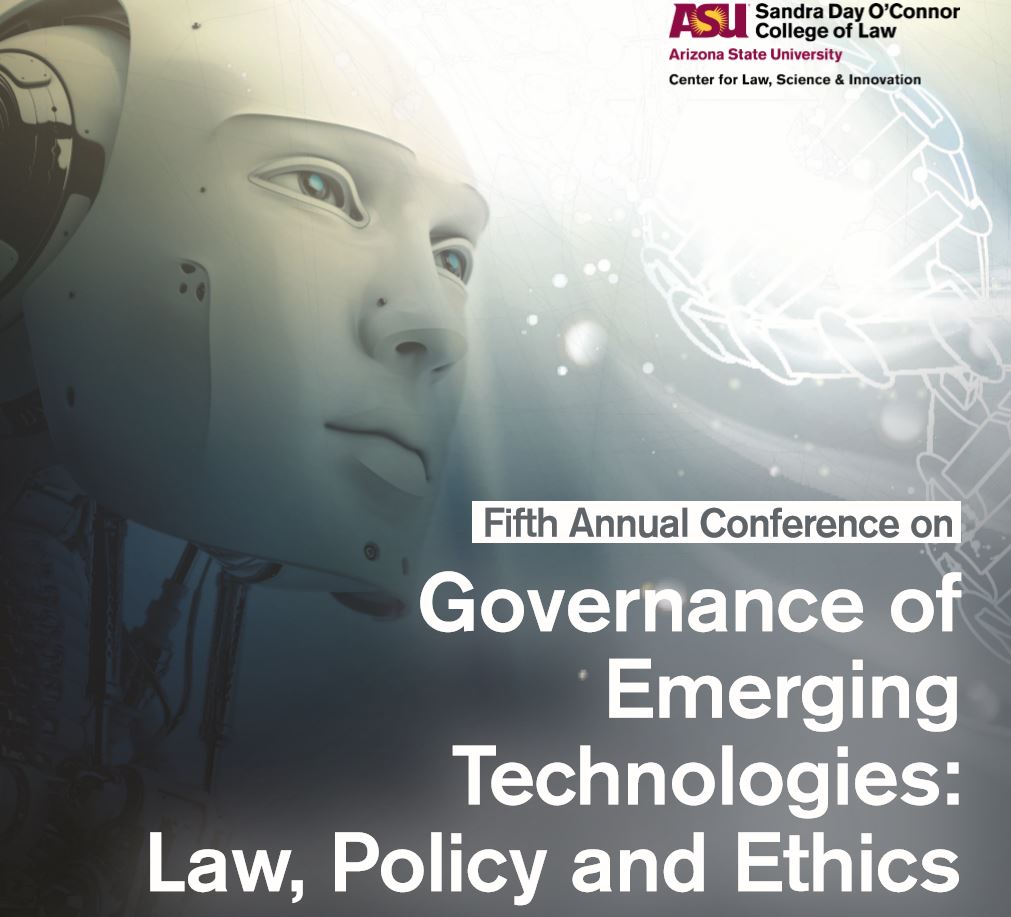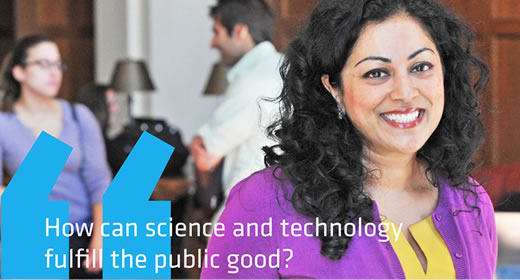What follows is Part 5 of a series of select summaries of conference presentations, each prepared by 2L Jesse James, given at LSI‘s Fifth Annual Conference on Governance of Emerging Technologies: Law, Policy and Ethics, held at the Sandra Day O’Connor College of Law, Beus Center for Law & Society, Phoenix, AZ on May 17-19, 2017.
Shobita Parthasarathy of The Gerald R. Ford School of Public Policy at University of Michigan was the last keynote speaker of Day 1. She outlines the differences in patent governance between the European Union (EU) and the United States (US), driven by culture and governmental structures, as expressed in her recent book Patent Politics.
Parthasarathy begins by questioning the role of the patent system in governing emerging technologies. Society tends to think of patent protections as a way to stimulate innovation – providing economic benefit to the inventor and social benefit to the public through the ability to access new technologies. However, over the last 40 years that impression has eroded a little bit. Now there are questions about whether patents are increasing access or stimulating research, or if it is ethical to patent certain things, or should we close the commons in such a way. “Who are the real inventors and discoverers, and are their benefits allocated appropriately?” Parthasarathy asks.
Having a keen interest in genetics, Parthasarathy noticed that patents appeared to be playing an incredible role in shaping the growing field. Looking at governance, she sought to research the difference between how the US and the EU regulate patents with respect to genes themselves and genetically modified organisms.
In some ways, both systems are politically and economically similar and possess comparable scientific and technological capacity. Both advocate international harmonization. Scholarship focuses on legal differences, particularly the “ordre public” clause – a clause that recognizes something too important to be patentable, and thus belonging to the public. Why does it never get invoked? What does that tell us about the politics of the patent system?
Parthasarathy’s methodology involves qualitative interpretive methods: using historical records, interviews, and document analysis, all to identify and understand social patterns. She looks to recent controversies like patents on human, animal, and plant genes and analyzes patent prosecutions. Over one hundred US and EU patent officials, government representatives, activists, patent lawyers, legal scholars, and industry representatives have provided Parthasarathy with their perspectives. She has also attempted to put recent controversies in historical perspective by analyzing US Congressional documents, court decisions, and amicus briefs from the late 18th c. to present. Parthasarathy explains this to cement the idea that she is a serious scholar and historically grounded. Her book, Patent Politics, emphatically discusses the recent controversies.
“The primary argument,” Parthasarathy says, “is that patents and patent systems are fundamentally shaped by politics and society, with significant differences across jurisdictions.” The role of political culture, ideology, and history is extremely important. For instance, in the U.S., we see market-making forces where consumers have ultimate authority as to whether genetically modified organisms (GMOs) are good or bad. This contrasts with the EU’s market-shaping ideologies where government has a much greater active role. With these and other structural and cultural differences come different approaches to governance.
Parthasarathy clarifies that when she speaks of the EU, she refers to the Pan-European patent system, but the individual nations have a similar foundation. In the EU, she says, patents function as moral/socio-economic objects whereas in the US they function as innovation/market drivers. Public interest limits on early economic privilege systems were incorporated into the 17th century modern, rights-based system. The European system echoes the approach of the ordre public clause which prohibits patents on inventions deemed contrary to public policy or morality. On the other side of the pond, there is a distinction in the name of the public interest, the government has responsibility to consider patents as potentially contrary to such. In the US, there is great emphasis on procedural objectivity, a technocratic approach to examination in which scientists and engineers should be the ones who authorize patents, with an assumption everyone will act in the inventor’s interest because the inventor’s interest simply is the public interest.
Today, where life forms are patented, questions emerge. Parthasarathy asks, “Are life forms technologies? Should they be patentable? Who should make these decisions, and how?” It depends on the perception of the patent system’s role in the context of science and technology policy. From certain standpoints, it is unclear whether patented life forms are discoveries or inventions; it is unclear who should be making these decisions, but the US has treated it as a narrow legal question about products of nature. As seen in Diamond v. Chakrabarty (U.S. 1980), the question was raised if a genetically engineered microorganism designed to eat oil was a product of nature. The court ruled (5-4) “anything under the sun made by man” to be patentable.
In the EU, the European Patent Office (EPO) opposition mechanism permits third party challenges. One may argue the oncomouse (a genetically engineered cancer lab rat with a predilection for cancer) violated the ordre public clause. Thus, a space for ethical reasoning develops and a new sense of public accountability may emerge. Parthasarathy explains, there is no longer simply procedural objectivity, and there’s a hint in the air that maybe another group of people exists besides the inventor whose interests must be considered.
Over the decades, challenges have intensified. In 1998, a biotech patent directive allowed human gene patents after much controversy. In 2001, the EPO granted Myriad Genetics multiple patents on BRCA genes (which are linked to inherited susceptibility for breast and ovarian cancer) Myriad had already successfully established gene testing monopolies in the US and this patent gave it a monopoly in the EU. European Parliament then condemned EPO on moral and socio-economic grounds. Patient advocates and other civil society groups, scientists, and physicians launched an opposition on the basis of the ordre public clause and other violations. EPO revoked the patents on technical grounds (not moral) and argued the controversy was based on an access problem, not an ethical one. Following this, national governments passed compulsory licensing laws for gene patents. Parthasarathy concluding, defines the impacts of patents is, in and of itself, political.
In 1997, the US patent office (USPTO) granted BRCA patents to Myriad. Myriad used those patents to shut down other test providers. In 2000, the cDNA (synthetic, complementary DNA) patent controversy raised the question, “Do patents stifle innovation?” Later, in 2009, the ACLU sued Myriad and the USPTO on behalf of multiple plaintiffs. Only one had legal standing: a competitor. In 2013, the Supreme Court ruled naturally-occurring, isolated genes unpatentable “products of nature,” with no room to address the moral or socio-economic concerns that drove the lawsuit. Overall, Parthasarathy finds, the patent system is resistant to the idea it should consider “implications.” Once again, “Defining the impacts of patents is, itself, political.”
Parthasarathy concludes proposals for change must consider the political culture, ideology and existing institutional frameworks. But she offers hope, with a vision of what role the patent system could play, with a little finagling: it sees the development of scientific fields, tech eras, and industries at early stages and could help shape them. It could help society anticipate where and how access and distributional concerns might arise, and help flag public and moral concerns early on.


















